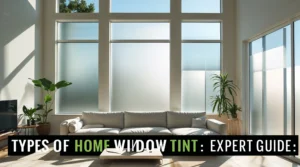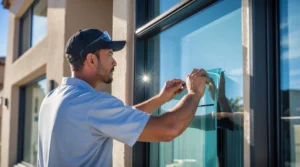Residential window tinting is more than a stylish home upgrade; it’s a smart way to improve comfort, privacy, and energy efficiency. This guide explains what residential window tinting is, its benefits, the installation process, and maintenance tips. You’ll also learn how choosing the right tint can transform the way your home feels, looks, and performs all year round.
Introduction to Residential Window Tinting
If you’ve ever wondered how to make your home more comfortable, energy-efficient, and private without major renovations, residential window tinting might be the answer. This process involves applying a thin film to the interior side of your home’s windows. It helps block excess sunlight, reduce glare, and keep indoor spaces cooler.
Today, homeowners are turning to window tinting for homes as a practical solution to rising energy costs and harsh sunlight. It not only adds style but also protects your interior furnishings from fading. Whether you want to improve heat control, enhance privacy, or simply enjoy a softer light indoors, tinting your home windows offers long-lasting benefits that go beyond looks.
Why Homeowners Choose Window Tinting
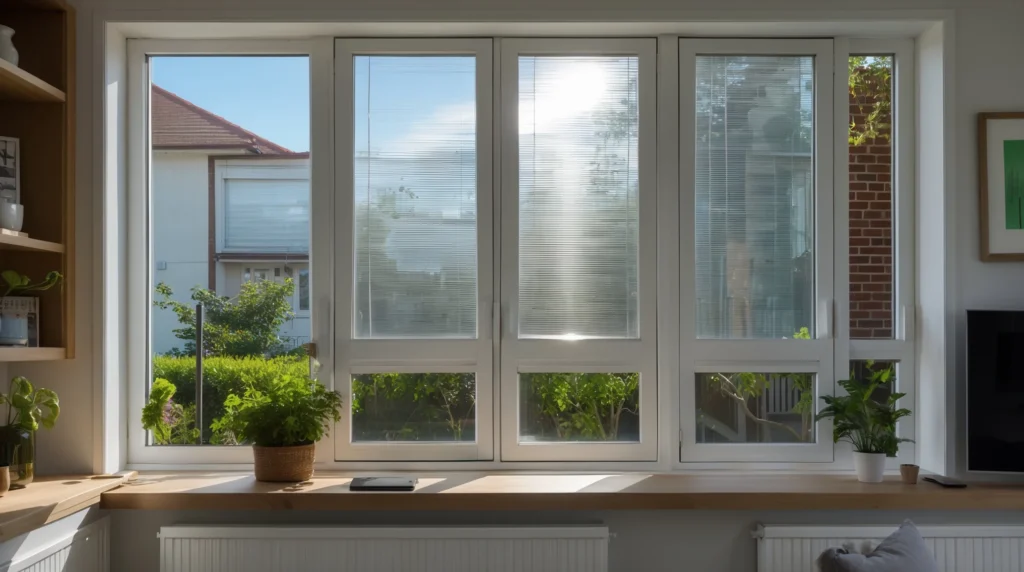
People invest in home window tinting for many reasons. The most common motivation is energy savings. During summer, untreated windows let in a lot of heat, forcing air conditioners to work harder. A good quality window tint for residential homes reflects much of that heat, keeping your space cooler and your energy bills lower.
Privacy is another key reason. Tinting windows at home lets natural light in while reducing outside visibility, especially useful for homes in busy neighborhoods. Beyond privacy and comfort, window tinting can also reduce glare from screens and televisions, creating a more relaxed environment for work or entertainment.
Understanding Different Types of Home Window Tinting
Not all tints are created equal. Each type of residential window tint serves a specific purpose and offers unique benefits.
- Solar Control Films: Designed to block UV rays and reduce heat. These are perfect for rooms exposed to strong sunlight.
- Decorative Films: Ideal for adding style or a frosted look to interior windows. They enhance privacy without blocking light.
- Security Films: Strengthen glass to prevent shattering and improve safety.
- Low-E Films: Help maintain indoor temperature by reflecting heat inside during winter and away during summer.
Choosing the right window tinting for residential homes depends on your goals, whether it’s comfort, aesthetics, or energy efficiency.
Benefits of Window Tinting for Your Home
The benefits of window tinting for your home go far beyond appearance. It offers both immediate and long-term advantages that impact your lifestyle and budget.
- Heat Reduction: Tinting helps control indoor temperature by blocking up to 80% of solar heat.
- Energy Efficiency: Lower reliance on air conditioning and heating means reduced utility costs.
- UV Protection: Tint films block harmful ultraviolet rays that can damage furniture, flooring, and artwork.
- Privacy & Security: Tinted glass keeps prying eyes out while maintaining clear views from inside.
- Enhanced Comfort: Less glare, balanced lighting, and more consistent room temperatures improve everyday living.
When you combine these benefits, it’s easy to see why window tinting for homes has become a popular and valuable home improvement choice.
How Residential Window Tinting Helps with Heat Reduction
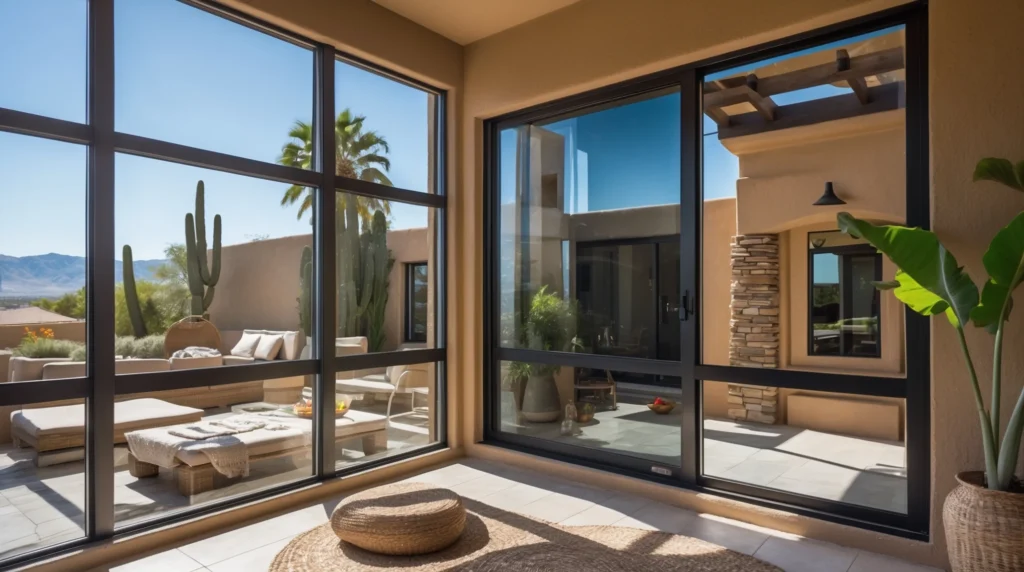
For homeowners in warmer regions, heat management is a major concern. That’s where home window tinting heat reduction plays a vital role. By reflecting solar energy, tint films act as a thermal barrier between your home’s interior and the hot outdoors. This means your air conditioner doesn’t have to work as hard, leading to noticeable savings on your electric bill. Additionally, tinted windows make rooms feel more balanced and comfortable, eliminating the “hot spots” that occur near untreated windows.
In sunny areas like Las Vegas, proper tinting can lower interior temperatures by several degrees, creating a cooler, more pleasant environment throughout the day.
Can You Tint Your Home Windows Yourself? (DIY vs. Professional)
Many homeowners wonder, “Can you tint home windows yourself?” The short answer is yes, but with caution. Home window tinting DIY kits are widely available and may seem cost-effective, but applying tint requires precision. Small mistakes such as air bubbles, uneven trimming, or dust between the film and glass can ruin the appearance and reduce effectiveness. Professionals, on the other hand, use high-quality tools and techniques that ensure perfect adhesion and longevity.
Brands like Window Tinting LasVegas provide skilled technicians who measure, cut, and install films precisely. Professional tinting guarantees smoother finishes, better durability, and often comes with a warranty, making it a smarter long-term investment.
Choosing the Right Window Tint for Residential Homes
Before buying, it’s important to consider your specific needs and climate. For homes in sunny or desert regions, window tint for the home should prioritize heat rejection and UV protection. If your goal is privacy, opt for darker or reflective films. For style and light diffusion, decorative films might be best. Always check film ratings for visible light transmission (VLT) and UV rejection percentages to match your desired balance of clarity and protection.
Working with professionals like Window Tinting LasVegas ensures you choose the right tint that complements your home’s design and environment while meeting local regulations.
The Process of Applying Tint to Home Windows
The process of applying tint to home windows involves several careful steps to ensure a smooth, lasting finish:
- Cleaning the Glass: The surface must be spotless; any dust or debris can create bubbles.
- Measuring and Cutting: The tint film is measured precisely to fit each window pane.
- Preparing the Film: The film’s backing is peeled away while spraying a slip solution to prevent premature sticking.
- Applying the Film: The film is placed on the glass and carefully smoothed using a squeegee to remove air pockets.
- Trimming and Finishing: Edges are neatly trimmed, and the film is left to cure for several days.
When applied correctly, the result is seamless and clear, almost invisible except for the improved comfort and reduced glare it provides.
Common Mistakes When Tinting Windows at Home
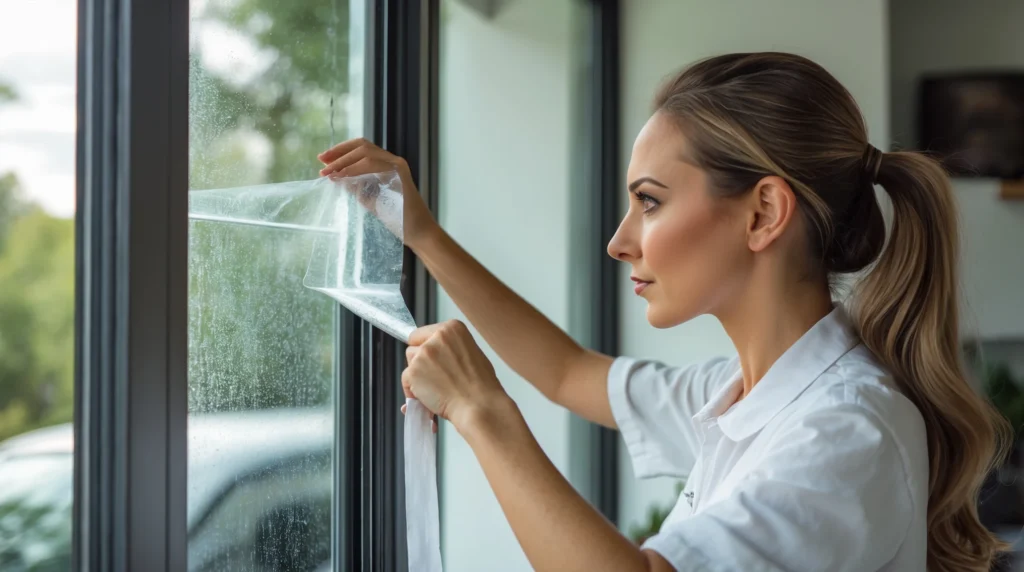
DIY enthusiasts often face challenges when working with tinting windows at home. Some of the most common mistakes include:
- Skipping Cleaning: Even specks of dirt can ruin the finish.
- Incorrect Measurements: Cutting the film too small or large leads to poor fitting.
- Ignoring Temperature Conditions: Applying tint in extreme temperatures affects adhesion.
- Rushing the Process: Not allowing proper drying or using inadequate tools can cause peeling and bubbling.
Avoiding these errors is key to long-lasting, professional-looking house-tinted windows.
Why Professional Window Tinting in Las Vegas Is Worth It
Hiring professionals for residential window tinting ensures precision, quality, and results that last for years. In areas with intense sunlight, like Las Vegas, professional installers understand the importance of using films designed for local conditions.
A professional service guarantees flawless application, high-grade materials, and a clean, bubble-free finish. You’ll also gain peace of mind knowing your tint won’t peel, crack, or discolor prematurely. Whether it’s for heat control, privacy, or UV protection, expert services deliver superior value and long-term savings.
When done by specialists, window tinting for your home enhances both comfort and property value while maintaining the aesthetic of your space.
Maintaining Your House Tinted Windows for Long-Term Results
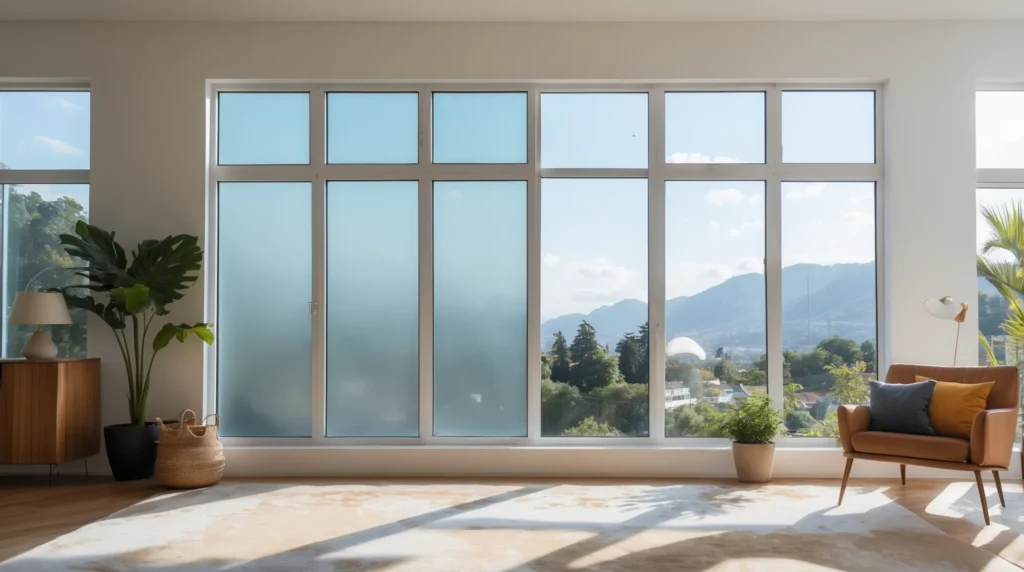
Proper care extends the lifespan of residential tinted windows. After installation, avoid cleaning for at least a week to allow the film to cure fully. When cleaning, use a mild soap solution and a soft microfiber cloth. Avoid harsh chemicals or abrasive tools that could scratch the film.
Inspect your tinted windows periodically for any peeling or discoloration. Well-installed films typically last 10–15 years, depending on exposure to sunlight and weather. Keeping them in good condition ensures your home remains cool, private, and stylish.
Conclusion
Residential window tinting is an affordable, efficient way to transform your living space. It enhances comfort, privacy, and energy efficiency while protecting interiors from harmful UV rays. Whether you choose DIY or professional installation, the right tint can make a lasting difference in how your home feels and functions.
If you’re ready to experience cooler rooms, lower bills, and a more refined look for your home, reach out to experts who understand your local climate and design needs.
Call Window Tinting LasVegas today to schedule your free consultation and discover the perfect tint solution for your home.

